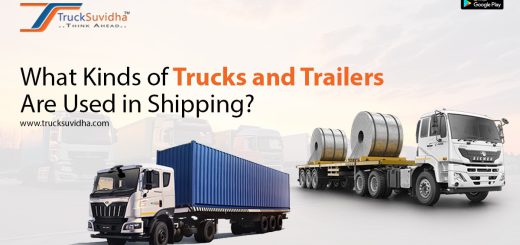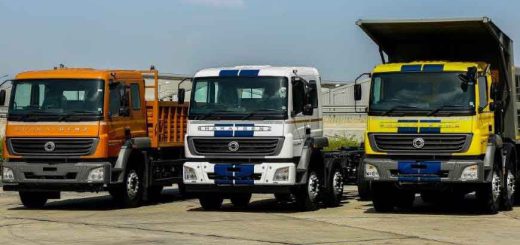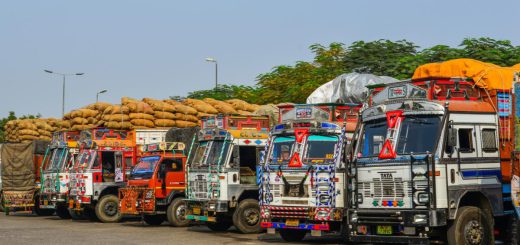Effective Solutions for B2B Last-Mile Delivery
In today’s rapidly changing world e-commerce has revolutionized the way we shop. As a result, the demand for efficient and reliable last-mile delivery logistics has increased. The last mile represents the efficiency of operations and the strength of the logistics network. Last-mile delivery can have an impact on a retailer’s success and the strength of a distributor’s network.
For various clients, different elements drive value. Providing solutions based on the demands of various consumers and making required changes to the solutions may result in a better customer experience. Better customer service can lead to repeat sales, loyal customers, and a more positive company reputation. Word of mouth can bring in new company chances after such encounters.
Challenges of Last-Mile Delivery
Last-mile delivery logistics presents several issues owing to its complexity and specific needs. One of the primary difficulties is traffic congestion. Urbanisation Various distribution locations, consumer preparedness, and rising expectations Traffic congestion in cities increases the duration and expense of delivery, while the rise of e-commerce has resulted in fewer and more frequent deliveries. This makes it challenging to optimize routes for maximum efficiency.
Furthermore, the features of different delivery places. This applies to residential structures, workplaces, and rural locations. This presents special issues. Deliveries to high-rise buildings sometimes necessitate elaborate security protocols and restricted entry points. While shipping to rural places might be difficult owing to limited infrastructure and lengthy distances…
Ways to Make Last-Mile Deliveries More Effective
Tools for Increasing Last-Mile Efficiency
Traditional shipping techniques are designed to handle large shipments. But this has now been revised to accommodate smaller regular purchases. The growth of online shopping is putting increased pressure on distribution chains to accelerate delivery, and B2B customers are demanding an experience comparable to B2C customers, including options for flexible and faster shipping. such as small items As a result, logistics businesses need to reevaluate their strategies and invest in new technology to keep up with these changing demands. They can do this to increase customer satisfaction. expedited delivery and maintain competitiveness in a rapidly evolving industry.
Route Selection
Technology now allows us to automatically discover and calculate the best routes for cost-effective and timely delivery. Route optimization can help businesses avoid challenges like driver availability, bad weather, congested roads, and a shortage of workers to assist with loading and unloading. Route optimization considerably improves on-time delivery rates, which are critical in the B2B industry. Furthermore, when it comes to B2B supply chains, the shortest distance does not always determine the best option. Prioritizing orders and considering multiple routes are determined by the significance of the customer, the type of goods, and the distribution network.
Real-Time Tracking
B2B organizations can significantly enhance supply chain transparency and fleet management by leveraging real-time delivery vehicle tracking. This integrated system enables customers to receive timely updates on the status of their items and estimated delivery times, fostering a more informed and satisfied customer experience.
Additionally, it simplifies the delivery exception handling procedure, saving the company money. Businesses may increase overall customer happiness, streamline their logistical operations, and cut down on inefficiencies by implementing this technology. Increased loyalty, retention, and eventually more income can result from this. Businesses may achieve commercial success and obtain a competitive advantage in the market by using real-time tracking.
Also Read:- Electric Vehicles in Trucking: A Future Reality?
Solutions Tailored to the Industry
Last-mile delivery for various product categories has varying requirements. Modern supply chains are built on industry-specific solutions. Pharmaceutical, food, and beverage delivery systems may require temperature control, whereas heavy machinery may require distinct transportation techniques. Customization of distribution methods and modes may aid in providing better customer service and solutions.
Reports and Analytics
Reports on observed patterns and key data points may aid in making better decisions. Analytics may help get a detailed understanding of last-mile delivery parameters, which can then be used to improve operational efficiency. These insights may also aid in making essential modifications to existing procedures.
One of the hurdles to overcome in last-mile delivery in the B2B landscape is timeliness. Distribution centers and retail establishments each have their own set of time frames. When it comes to last-mile delivery, volume is also important. To make last-mile delivery stronger and more efficient, new-age solution providers can use tools and technology such as warehouse management systems, artificial intelligence, control towers, and more.
Conclusion
In conclusion, to compete and provide outstanding client experiences, businesses must optimize last-mile delivery in a B2B setting. Businesses may increase customer happiness, optimize logistics performance, and cut down on inefficiencies by utilizing technology like real-time tracking, optimization techniques, and industry-specific solutions. Decisions made by management can be more intelligent and increase operational efficiency.




Recent Comments